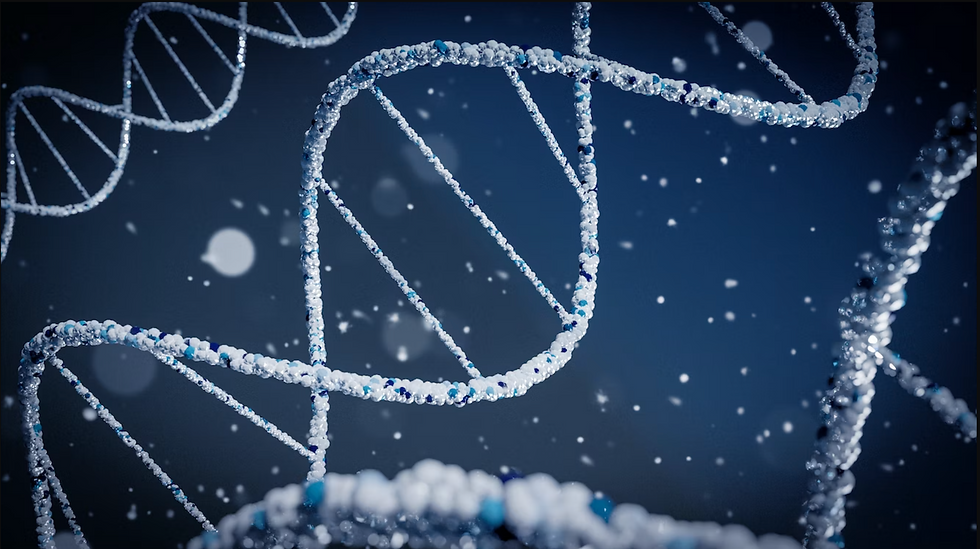ㅤ

Article by Josephine Watkins, Margaretha Morsink, & Roberta Lock
Maturing Cardiac Tissues Using Tricellular-Cultures
Source Publication:
Human-iPSC-Derived Cardiac Stromal Cells Enhance Maturation in 3D Cardiac Microtissues and Reveal Non-cardiomyocyte Contributions to Heart Disease, Cell Stem Cell, 2022
Elisa Giacomelli et al., Christine Mummery Lab
Heart disease is the leading cause of death in the United States. In fact, one person dies every 34 seconds in the United States from cardiovascular disease. The heart consists of multiple cell types that support its function. The cardiomyocytes are responsible for the main function of the heart: to beat. However, the other cell types, such as cardiac fibroblasts and endothelial cells, are supporting cells. The cardiac fibroblast secrete ECM matrix molecules [link to encyclopedia] that form the structure of the heart. Many scientists have studied the function of cardiomyocytes, however there is increasing interest in discovering the role of the supporting cell types of the heart to find cures for heart disease.
What did these researchers do?
These researchers utilized induced pluripotent stem cells (iPSCs) to separately differentiate three cardiac cell types: cardiomyocytes, cardiac fibroblasts, and cardiac endothelial cells. iPSCs are adult cells that have been reprogrammed back into an embryonic-like pluripotent state, allowing to form all kinds of cell types of the human body. Once these three cell types have been created, they were put together into a tri-culture in order to create a beating cardiac tissue that mimics our adult heart. The researchers showed that the tri-culture system produced more adult-like cardiomyocytes than cardiomyocytes cultured alone which helps to better mimic the human heart. Lastly, the researchers used an iPSC-cell line with a genetic mutation that causes disease to create diseased cardiac fibroblasts. They put these diseased cardiac fibroblasts into a tri-culture with healthy cardiomyocytes and endothelial cells and were able to distinguish the contribution of the fibroblasts to heart disease of this mutation.
Immunofluorescent stain of tri-culture cardiac tissue
Why is this important?
In order to study cardiac disease and potential drugs for cardiac disease, researchers have to use cardiomyocytes for their experiments. However, adult cardiomyocytes do not proliferate and are very difficult to get from a healthy human. Therefore, iPSCs that are differentiated into cardiomyocytes provide an ideal solution to give an unlimited supply of human cardiomyocytes. However, since iPSCs are fetal-like cells, the cardiomyocytes they produce are significantly less mature than the cells in an adult’s heart. Since heart disease occurs mostly in adults, it is important to find ways to mature the cardiomyocytes so that researchers can study the mechanism of cardiac disease and identify or test therapeutic targets.
This research shows that a potential way to mature cardiomyocytes is to provide them with other supporting cell types, in this case cardiac fibroblasts and endothelial cells, to enable communication and signaling between the cells. This signaling has been shown to mature the cardiomyocytes by changing how they behave and function. The importance of the role supporting cells play in mimicking heart tissue is further highlighted by the findings that cardiac fibroblasts alone were able to generate a diseased phenotype within a co-culture of health cardiomyocytes and endothelial cells. This is a very new research approach, since most researchers have focused on studying the cardiomyocytes as they provide the most critical function of the heart.
How did the researchers do this?
They used a tricellular combination of iPSC cardiomyocytes, cardiac fibroblasts, and cardiac endothelial cells to create three-dimensional microtissues. The cardiomyocytes were more mature in the tricellular system compared to the co-culture of cardiomyocytes and endothelial cells. The researchers proved this in several ways:
-
The sarcomere structures that allow for the contraction of cardiomyocytes were more aligned (see image). This is typically found in adult cardiomyocytes but not fetal cardiomyocytes.
-
Using RNA sequencing, which looks at the entire RNA transcription in the cell, they showed the tricellular culture is most similar to adult cardiomyocytes.
-
The tricellular tissues contracted better and faster.
-
The metabolic products, which is how the cells use their energy, was similar to adult cardiomyocytes.
Lastly, they did the same experiments for the diseased cardiac fibroblasts and that’s how they were able to show the cardiac fibroblasts alone can cause heart disease.
What comes next?
This research opens up many opportunities within the field of cardiovascular diseases and beyond. However, it also leaves room for significant improvement to create more complex and replicative models in the future. The use of iPSC tricellular-culture can be reapplied to other organs in order to create adult models without needing to take cells from patients. Additionally, these models can be used to study genetic mutations and their impact on cardiovascular health and to look at the contribution of individual cell types to disease. This enables a greater understanding of the mechanism of diseases which can be used to identify potential therapeutic targets and ultimately help cure heart disease!